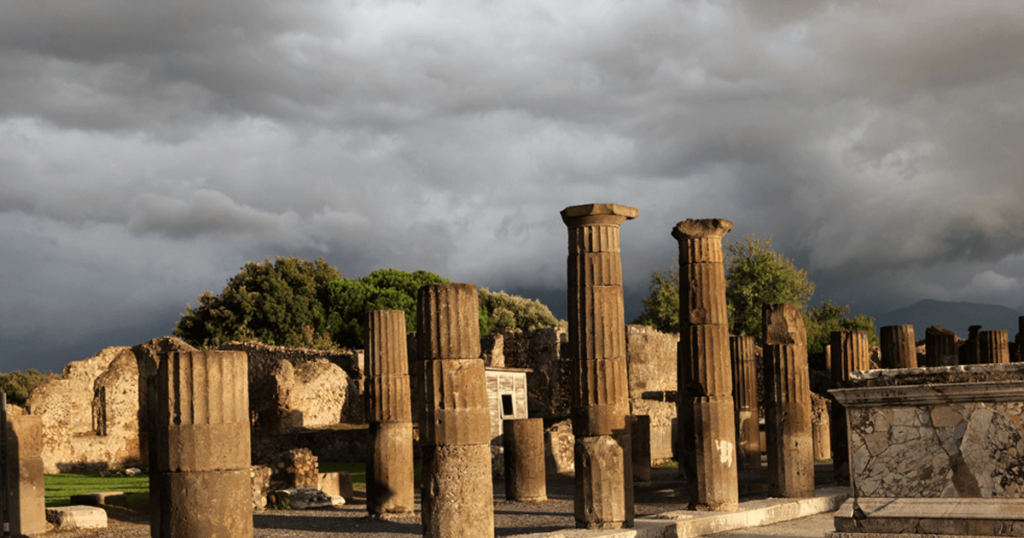
Recent scientific evidence suggests two of the forces that caused Rome to crumble were climate change and pandemic disease. Historian Kyle Harper examines how, even after hundreds of years as the powerhouse of the Mediterranean and beyond, Rome ultimately could not withstand the debilitating effects of a “little ice age” and a population dwindling from plague. In this excerpt, though, the miasmic Italian terrain actually serves—temporarily—to protect its citizens from the invading Huns.
The final and most famous act of the Huns was more of an encore than a decisive scene. As the Roman Empire was reeling, their most notorious king, Attila, scaled up the Hun war machine. For over a decade, he posed an existential threat to the eastern empire as well as the remnants of the Roman west. Throughout the AD 440s, he wasted the Balkans and engorged his royal circle on plundered wealth. In AD 447, after a massive earthquake felled the great walls of Constantinople (fifty-seven towers collapsed), the eastern capital of the Roman Empire lay helplessly exposed. Only the ramparts of the local disease pool repelled the advancing menace. “Against the stone of sickness they stumbled and the steeds fell. … He who was skillful in shooting with the bow, sickness of the bowels overthrew him—the riders of the steed slumbered and slept and the cruel army was silenced.” As its last line of defense, the Roman Empire was protected by the invisible ring of germs that lurked in wait for unsuspecting invaders.
Attila saved his two grandest campaigns for Gaul and Italy. At the head of a huge, mixed army of Huns and Germans he crossed the Rhine in AD 451; his force was met in open battle by a Roman general, Aetius, at the head of a mixed army of Romans and Germans. The stalemate blunted the advance of the Hun empire, now clearly beyond its steppe ecozone. But Attila was not finished. In AD 452 the clattering horde rode into Italy. His horsemen plundered the Po Valley. Milan fell without resistance, and Attila occupied the imperial palace. Enraged by a depiction of dead Huns sprawled beneath the emperor’s throne, the king found an artist “to paint Attila upon a throne and the Roman emperors with sacks on their shoulders pouring out gold at his feet.” Realizing that nothing could stop a Hun advance into central Italy, and unable to muster any military resistance worthy of the name, the Romans dispatched a desperate embassy headed by Pope Leo himself.
It is one of the curiosities of history that the column of Huns receded back across the Alps into the Hungarian Plain. Attila was nothing if not a shrewd calculator. “Beneath his great ferocity he was a subtle man.” What actually repulsed the invaders was seen, from one perspective, as “heaven-sent disasters: famine and some kind of disease.” The retreat was in fact the predictable biological consequence of intruders colliding with the indigenous disease ecology. The heartland of empire was a gauntlet of germs. The unsung savior of Italy in this affair was perhaps even malaria. Pasturing their horses in the watery lowlands where mosquitoes breed and transmit the deadly protozoan, the Huns were easy prey for malaria. All in all, it may have been wise for the king of the Huns to turn his cavalry back toward the high steppe beyond the Danube, cold and dry, where the Anopheles mosquito could not follow.
Excerpted from THE FATE OF ROME: Climate, Disease, and the End of an Empire by Kyle Harper. Copyright © 2017 by Princeton University Press. Reprinted by permission.


